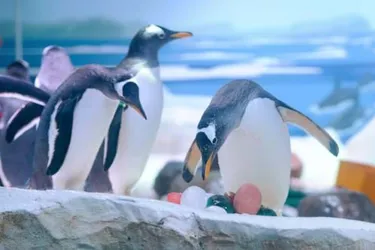Sea Creatures That Lay Eggs: Easter Edition!
- Tuesday 1st April 2025

When we think of Easter, we often picture colourful eggs, but did you know that many sea creatures lay eggs too? Here’s a fun look at some fascinating egg-laying sea animals and their unique egg-laying habits:
Turtles
Sea turtles are famous for laying eggs on sandy beaches. Female turtles return to the exact beach where they hatched to lay around 100-150 eggs per clutch. These eggs are leathery, not hard like bird eggs, and are about the size of a ping-pong ball. After laying their eggs, turtles cover them with sand to protect them from predators and the elements.
Penguins
Penguins are well-known for their adorable eggs. These birds typically lay two eggs, but the second one is often smaller. The eggs are about the size of a large marble and have a smooth, oval shape. Penguins usually lay their eggs on rocky or ice-covered coastal areas, where the parents take turns incubating them in their warm body folds.
Sharks & Rays
Many species of sharks and rays lay eggs, but their eggs are quite different from other sea creatures. Shark and ray eggs are enclosed in a tough, protective casing, sometimes called a "mermaid’s purse." The size of the egg depends on the species, but they are often about the size of a small lemon. Sharks and rays lay anywhere from a few to several dozen eggs, depending on the species. These eggs are typically found on the ocean floor, wedged in seaweed or coral to keep them safe.

Clownfish
Clownfish are famous for their relationship with sea anemones, and they also lay eggs in this safe, protected environment. A female clownfish lays up to 1,000 eggs at a time on a flat surface, usually near the base of the anemone. The eggs are small, round, and bright orange, making them easy to spot. The male clownfish guards and aerates the eggs until they hatch.
These sea creatures show us that eggs come in many shapes and sizes, each with unique adaptations to help protect the next generation. So, this Easter, while you enjoy your chocolate eggs, think of the fascinating real-life eggs laid by these incredible sea creatures!